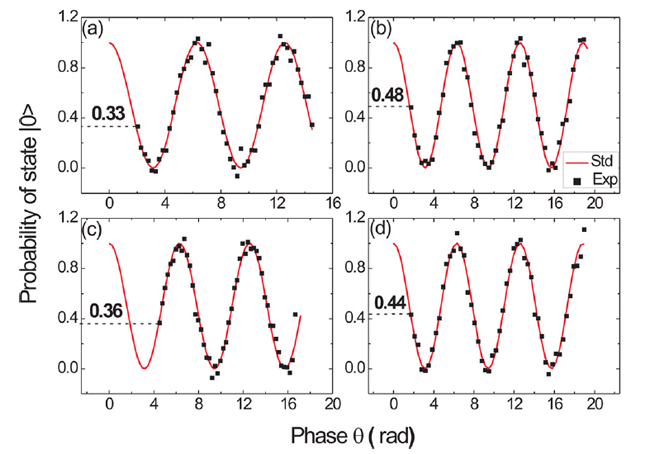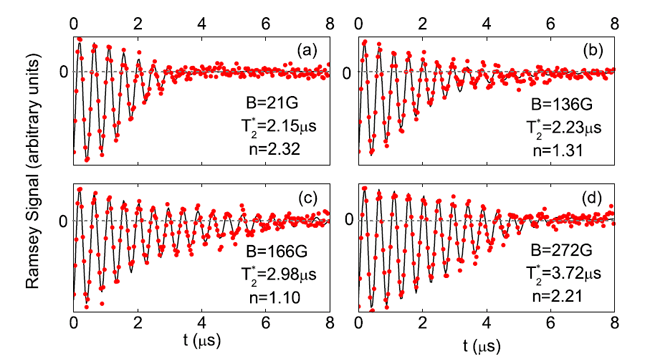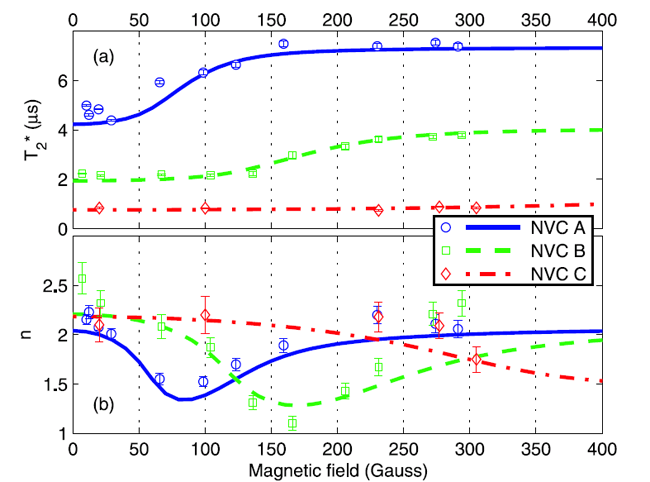Researchers made new progress on quantum computation research with nitrogen vacancy centers in diamond
During the past few years, Dr. Xinyu Pan from Institute of Physics, Chinese Academy of Sciences, built two laser confocal scanning microscope systems. With home built microwave near field antenna, they carried out research on quantum information processing with nitrogen vacancy centers in diamond.
Xinyu Pan cooperated with Prof. Heng Fan from IOP and reported an experimental realization of optimal phase-covariant quantum cloning machine with a single electron spin in solid state system at room temperature. The involved three states of two logic qubits are encoded physically in three levels of a single electron spin with two Zeeman sub-levels at a nitrogen-vacancy defect center in diamond. The preparation of input state and the phase-covariant quantum cloning transformation is controlled by two independent microwave fields. The average experimental fidelity reaches 85.2% which is very close to theoretical optimal fidelity 85.4% and is beyond the bound 83.3% of universal cloning. The results were published on Applied Physics Letters (Applied Physics Letters 99, 051113 (2011)).
Xinyu Pan cooperated with Prof. Renbao Liu from CUHK on the discovery of controllable effects of quantum fluctuations on spin free-induction decay at room temperature. Fluctuations of local fields cause decoherence of quantum objects. Usually at high temperatures, thermal noises are much stronger than quantum fluctuations unless the thermal effects are suppressed by certain techniques such as spin echo. They report the discovery of strong quantum-fluctuation effects of nuclear spin baths on free-induction decay of single electron spins in solids at room temperature. They find that the competition between the quantum and thermal fluctuations is controllable by an external magnetic field. These findings are based on Ramsey interference measurement of single nitrogen-vacancy center spins in diamond and numerical simulation of the decoherence, which are in excellent agreement. The results were published on Scientific Reports (Scientific Reports 2, 432 (2012)).
The work was supported by National Basic Research Program of China (973 Program), the National Natural Science Foundation of China Grants , Hong Kong Research Grants Council/General Research Fund, and The Chinese University of Hong Kong Focused Investments Scheme.
 |
| Figure 1 Measured results of the quantum phase cloning. (a) Red line is the standard dependence of probability of the state ms=0 on the phase of microwave pulse, the black square is the experiment results for Rabi oscillations of transition, the start point of this curve determines the population probability at the state ms=0 is 33%, theory is also around 33%. (b) Start point of the curve determines the probability at the state ms=0 is 48% and theory is 50%. (Image by Xinyu Pan et al.) |
 |
| Figure 2 Typical Ramsey signals of an NVC as functions of time under various magnetic field strengths. (a) B = 21 Gauss, (b) B = 136 Gauss, (c) B = 166 Gauss, and (d) B = 272 Gauss. The red symbols are measured results, and the black lines are fitting. (Image by Xinyu Pan et al.) |
 |
| Figure 3 Dependence on the magnetic field strength of the NVC spin dephasing. (a) the dephasing time T2 , and (b) the exponential decay index n, for three NVC's (A, B, and C). (Image by Xinyu Pan et al.) |




